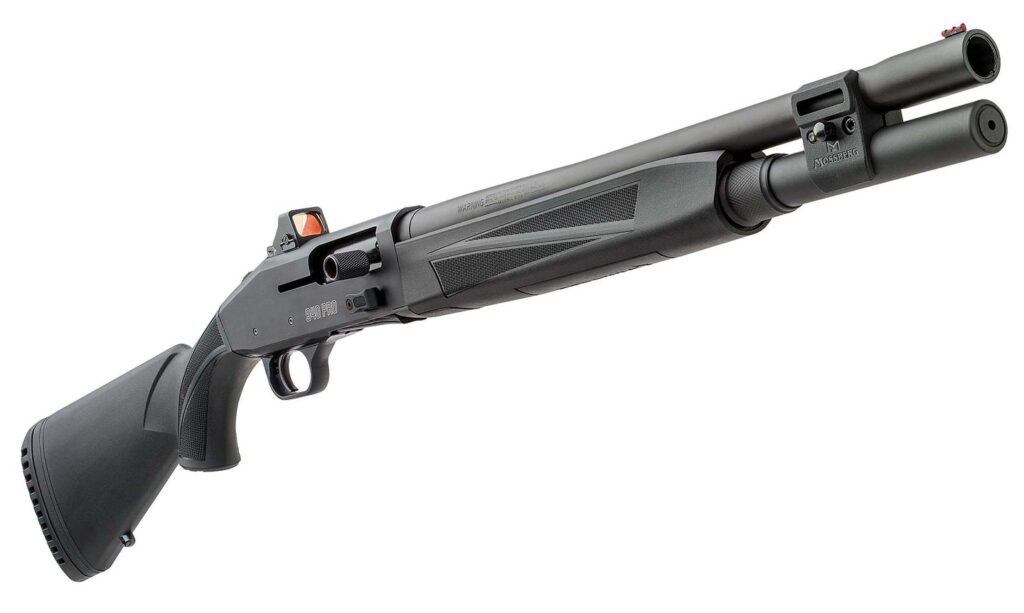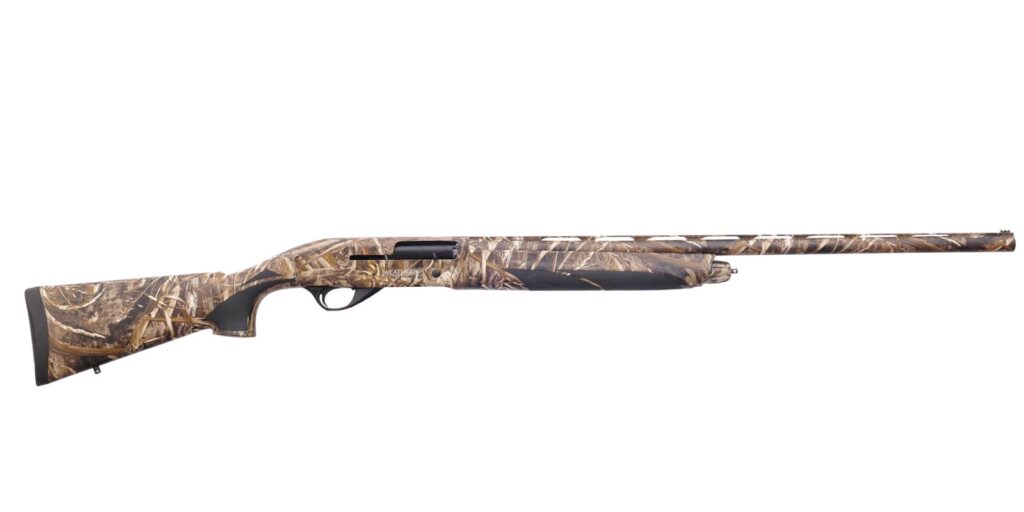Selecting the perfect shotgun for duck hunting can be quite a challenge, given the wide array of options available today. Factors such as design, comfort in handling, and operational capabilities often take center stage during the decision-making process.
Yet, an equally important aspect that is sometimes overlooked is the quality of the shotgun’s firing performance.
For a successful duck hunting experience, the firing pattern characteristics are crucial, but assessing them before a purchase can be difficult. To bridge this gap, we conducted a thorough examination of firing pattern traits by reviewing the top-rated duck-hunting shotguns on the market.
The purpose of this review was to evaluate manufacturers’ marketing claims and to ascertain whether higher-priced shotguns truly offer superior performance compared to their more affordable counterparts.
Key Considerations for Selecting a Duck Hunting Shotgun
When choosing a shotgun for duck hunting, several critical factors must be taken into account to ensure a successful and gratifying hunt. Here are the primary considerations:
- Gauge Choice: Decide on the shotgun gauge that suits your needs. While the 12-gauge is popular for duck hunting, options for 20-gauge and 10-gauge are also available. The gauge impacts the number of pellets in a shell and the recoil, so make your choice accordingly;
- Barrel Type: Choose between pump-action, semi-automatic, and break-action shotguns. Semi-automatics are favored for quicker follow-up shots, while pump and break-action shotguns are renowned for their reliability and simplicity;
- Shot Size and Type: Select the appropriate size and material of the shot for duck hunting. Steel, bismuth, and tungsten are common materials, with sizes ranging from #2 to #4 typically used for ducks and geese;
- Choke Tubes: Consider the choke options for your shotgun. Interchangeable chokes allow you to modify the shot’s spread pattern to suit the hunting conditions, whether for close-range or long-distance shooting;
- Managing Recoil: Pay attention to recoil management systems such as pads and gas-operated mechanisms. Reducing recoil can improve shooting accuracy and comfort during extended hunting sessions;
- Weight and Balance: The heft and equilibrium of a shotgun can affect how easily you can shoulder, swing, and aim it. Test out various models to find one that feels right in your hands;
- Durability and Weather Resistance: Duck hunting is often accompanied by wet and harsh conditions. Opt for a shotgun built with robust, corrosion-resistant materials and finishes to withstand the elements;
- Sights and Scopes: Consider which sighting systems or scopes you prefer. Many waterfowl shotguns come with simple bead sights, but some can be fitted with scopes for more precise targeting in various light conditions;
- Magazine Capacity: Determine your preferred magazine capacity. Magazines can vary, holding anywhere from 2 to 5 cartridges. Check the local hunting regulations for any magazine capacity restrictions;
- Camouflage and Finish: Select a shotgun with a camo pattern or finish that blends well with your hunting environment. This can keep you concealed from wary waterfowl;
- Budget: Establish your budget for purchasing a shotgun and explore options within your price range. Remember, quality firearms can be found at various price points;
- Ergonomics and Fit: The shotgun should be comfortable for you. Factors like stock length, drop, and cast can affect shooting accuracy. If possible, consult with professionals for fitting or adjustments;
- Brand and Model Reputation: Research the reputation and reviews of different brands and models. A reliable and esteemed manufacturer often indicates the quality of the firearm;
- Local Regulations: Familiarize yourself with local hunting regulations, including magazine capacity and permitted shot types. Ensure that your chosen shotgun complies with these regulations;
- Accessories and Upgrades: Look into available accessories such as slings, cases, and choke tubes that can enhance your hunting experience.
By considering these factors and conducting thorough research, you can select a duck-hunting shotgun that meets your preferences and enhances your hunting success.
Top Three Prime Shotguns for Duck Hunting
Discover the leading three firearms tailored for duck hunting:
MOSSBERG 940 PRO

A standout in its category, this firearm delivers unparalleled shot accuracy, boasting the highest shot placement percentage within a 30-inch circle. Surprisingly affordable, under $1000, it guarantees a precise aiming point and an even spread of shots, raising the bar for value and performance.
BERETTA A400 EXTREME PLUS

Matching up to the Mossberg in shot efficacy with 81% of shots landing within a 30-inch diameter, the A400 maintains a crisp aim and uniform shot distribution. Among the higher-end selections, the A400 Extreme Plus lives up to its acclaimed status.
WEATHERBY ELEMENT

The Element lands 71% of its shot within a 30-inch radius, marked by pinpoint accuracy and a consistent shot path. While its hit percentage trails some rivals, the Element showcases impressive features that stand out in its class.
These are just a few examples of the extensive range of duck-hunting firearms available. When selecting a shotgun, consider your budget, needs, and preferences. Always test out various models to find the perfect fit for you.
Performance Shortfalls
Some models fall short of their marketed technical capabilities:
- BROWNING MAXUS 2 and A5: Browning’s advertised optimal trajectory through a .742 back-bored barrel did not live up to its promise. Patterns showed gaps, and neither the Maxus 2 nor the A5 achieved the true precision in shot placement they promised;
- BENELLI SBE: Despite its high-end reputation for waterfowl hunting, the SBE’s shot placement was disappointing, often overshooting and missing the 30-inch target area;
- STOEGER M3500: Expected to deliver modest results due to its budget-friendly price point, the M3500 fell short. Its tendency to shoot high and with significant pattern gaps made it less competitive against similarly priced inertia guns like the Element.
Making an informed choice based on model features can greatly enhance your duck hunting experiences.
Conclusion
In the shotgun market tailored for duck hunting, price doesn’t always equate to performance. Models like the Mossberg 940 Pro, Beretta A400 Extreme Plus, and Weatherby Element have risen to the top with impressive outcomes, showcasing that costlier brand-name shotguns don’t always meet the mark. An informed choice centered on the gun’s features can elevate your duck-hunting experience significantly.
These shotguns consistently offer the reliability and precision needed for a successful hunt.
Conversely, some high-priced shotguns, including the likes of the Benelli Super Black Eagle 3, Browning Maxus 2, and A5, have fallen short of expectations, reinforcing the notion that a heftier price tag doesn’t guarantee superior field performance.
Ultimately, when it comes to choosing your duck hunting shotgun, the focus should be on the specifications, as they directly impact hunting success. Factor in your unique needs, preferences, and financial plan. Don’t hesitate to handle a variety of shotguns to discover the one that feels right in your hands and provides consistent, tight shot patterns.